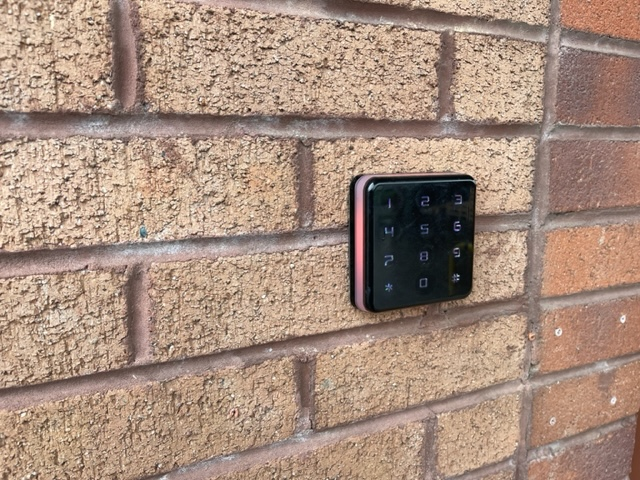How to Choose the Right Keypads and Card Readers
22 September 2022

Access control card readers and keypads are an integral part of an access control system. They are often the most visible part of a building’s security system, being installed close to an access-controlled doorway. There are several types of card reader and even keypad available but which is the right one for your building and access control needs?
What is an Access Control Card Reader?
An access control card carries an encrypted security key, known as a ‘credential’ which is read by a compatible card reader, when the card is placed within a few millimetres of the card reader. The card has an electronic circuit, microprocessor and aerial. The circuit is energized by the card reader’s electromagnetic field, allowing the code to the read.
The card reader then unencrypts the credential and sends the data over a local area network to the server or computer running the access control system and user-database. The database stores users and their credentials as well as histories and logs. If the credential is verified as valid for the controlled doorway, entry or exit or granted. Otherwise, the door remains ‘locked’. Card readers therefore provide keyless entry or exit through access-controlled doorways.
Compatible key fobs can be used in place of access control cards and the method of operation is exactly the same.
What is an Access Control Keypad?
Keypads provide the same function as access control card readers. Instead of presenting a card, the person wanting entry or exit has to enter a security PIN code. This is normally 4-digits but could be shorter or longer depending upon the access control system.
Entry of a correct PIN will allow entry or exit. Entry of an incorrect pin will result in access being denied. To help prevent keying errors, rolling PINS may be allowed, whereby a correct sequence of digits entered is immediately recognized.
What are Access Control Card Reader Keypads?
Card reader/keypads are combination devices, incorporating card reader and keypad functions. The devices can be set to operate as one or the other type or as a combination of the two. The combination role allows for what is termed multi-factor authentication (MFA). First the credential holder presents their card, and then after a ‘beep’ from the device, they enter their pin. Provided both the credential and PIN are verified, access is granted.
The Remsdaq EntroPad is a Wiegand compatible dual card reader and keypad with antimicrobial protection. EntroPad is compatible with MIFARE Ultralight® MIFARE Ultralight C®, MIFARE® Classic, MIFARE®, Classic EV1, MIFARE Plus®, MIFARE® DESFire, MIFARE DESFire® EV1, MIFARE®, DESFire® EV2, iCLASS®, PicoPass™ and EntroPass Secure and can act as a card serial number (CSN) or EntroPass secure ID keypad and card reader. From a building décor and colour scheme point of view, EntroPad keys and outer band colours can be changed to suit the building environment.
Mobile Reader Access Control
Another type of reader is the Bluetooth low energy (BLE) reader. This type of reader is also contactless and uses RFID technology to read a credential on a mobile phone. This method is growing in popularity in some environments where there is a large population who do not mind using their own mobile phones to carry access control credentials.
With this type of reader, the holder can place their mobile phone near the reader as though it was a card. Hand free and remote access are also options. With ‘hands free’ the mobile phone order simply has to walk past the Bluetooth reader to gain access or exit from a controlled doorway. They could also potentially use an associated App on their smartphone to remotely control a doorway or gate. The later use could be a security concern in more security conscious organisations and buildings, who tend to prefer MIFARE card technology.
Biometric Access Control Systems
Another type of access control reader that can be used with compatible access control systems is a biometric reader. The most popular biometric reader is a fingerprint reader but there are others including facial recognition, palm and even iris. The downside to any type of ‘contact’ reader like this became evident during the recent pandemic, as the fingerprint reader could become a source of infection if not cleaned often or users had hand sanitizer nearby.
Summary
Access control cards based on MIFARE technology are highly encrypted and secure. They also provide a low-cost and robust way to distribute credentials for all types of visitors and users of a building. Whilst access control card readers and keypads do not appear to offer the same functionality as a mobile phone BLE readers, they do potentially add more in terms of a security layer. Especially when building managers are looking to use Multi Factor Authentication (card reader and keypad PIN) to gain entry through an access controlled doorway.
